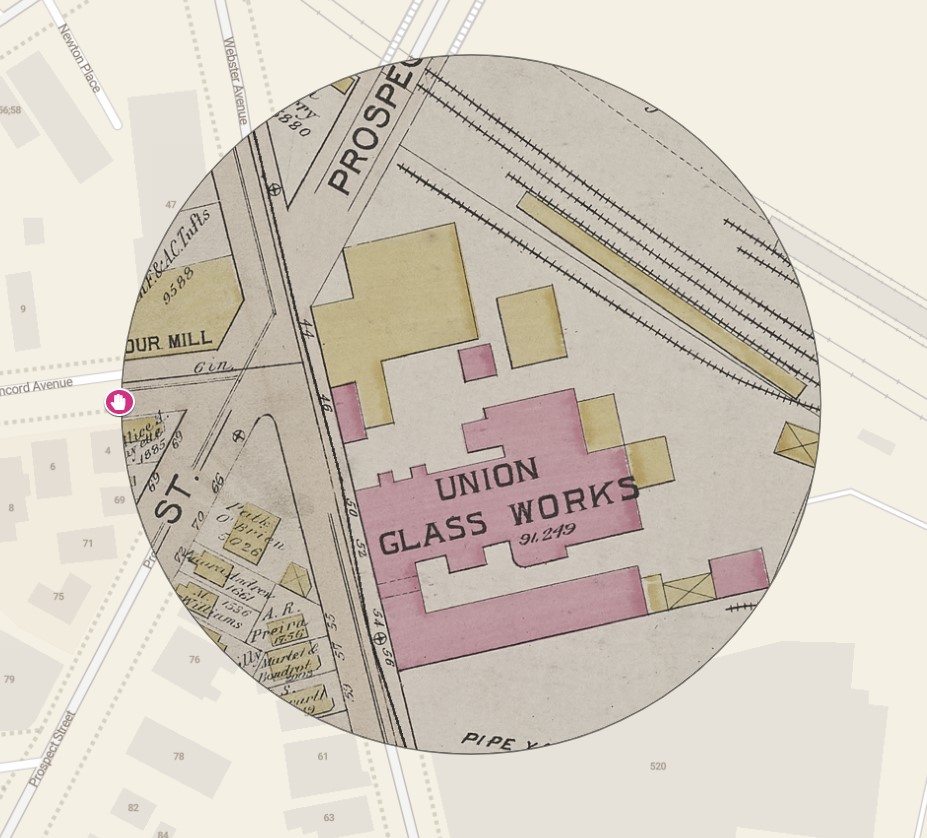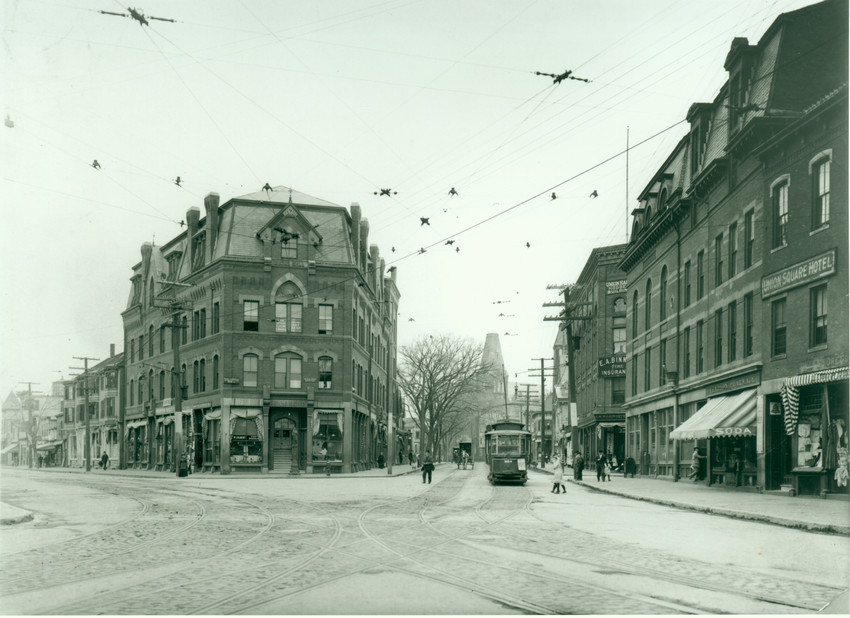If you’re in the Greater Boston Area, you probably heard about Monday’s historic opening of the Union Square stop on the MBTA’s Green Line extension. Local activists and community members in Somerville and Medford played a key role in the project’s completion after repeated promises from the State of Massachusetts since the 1990s. (The agreement to extend the line was made to mitigate impacts from the infamous Big Dig and to increase direct access to the city)

Union Square in 1915 along the elevated rail lines in Somerville.
The opening of the extension has been met with much celebration, but many of the long-time residents of Somerville and Medford are also worried about displacement due to a growing trend of gentrification and rising rents. As public transportation hubs cause neighborhoods to slowly gentrify, lower-income communities are often pushed out – the same people who most need public transportation access in the first place. Transit justice and housing justice are important topics in the much broader theme of Environmental Justice, which we focus on in our new exhibition, More or Less in Common.
The image above is from an atlas by the Boston Elevated Railway Company and the Department of Civil Engineering, showing Union Square in 1915 along the Fitchburg Railroad line. The first railroad lines in the area were introduced in the mid-1800’s with stations on Webster Street (near Prospect Street) and Kent Street. Originally Prospect Street Station, it was renamed Union Square in 1875. The station closed in 1938 and was demolished. You can browse the full atlas in our digital collections, which was created to show the track lengths of Boston area surface lines and subways. Union Square is on sheet 18 and shows numerous “car houses” off of Summer Street and Washington Street.

The Union Glass Company grew in size and production capacity from 1851 to its closure in 1927.
The image on the right shows Union Square in an 1895 Bromley fire insurance atlas. In this overlay from our Atlascope tool, we can see that what is now the location of the Union Square T stop used to be a glassworks factory, right next to the Fitchburg rail lines and a pipe yard. Started in 1851 by the Houghton business family, the Union Glass Company grew in size and capacity over the decades to employ over 200 people, many of them immigrants, and manufactured everything from doorknobs and windows to ornamental and decorative objects like vases. In the last two decades of the 19th century, production peaked under new ownership by Julian deCordova, a businessman and merchant of Jamaican heritage, but by 1927, it had shut down. (Read more about Julian deCordova’s life or about his Sculpture Park and Museum in Lincoln, MA.) You can also read more about the historic Somerville glassworks factory in this article from the Somerville Times.

A street car glides through Union Square as pedestrians walk by. Image from Historic New England..
Finally, this image is from our friends at Historic New England showing a street car at the intersection of Union Square and Bow Street from an unknown year. If you zoom in, it’s apparent that the large building on the left is labeled “Hill Building” (still partially intact today), and on the right, we can see an insurance agency, a pharmacy advertising soda, the Union Square Hotel, and several other buildings with family names. While a large number of greater Boston streetcar lines once existed, only a few remain - most notably on the Green Line.
What we’ve laid out in this article only scratches the surface of the rich history of Somerville and the important topic of environmental justice. If you’re interested, more resources to explore are below.
- Browse Atlascope to learn more history surrounding Union Square and the Greater Boston area.
- Read a rich history and self-guided tour of Union Square from the Victorian Society in America’s New England Chapter.
- Read a 2014 research study from the Metropolitan Area Planning Council (MAPC) on gentrification and displacement in Somerville.
- Explore the digital exhibition of More or Less in Common or visit it in person at our gallery in Copley Square. If you are an advocate for issues of transit or housing justice, and are interested in exploring these topics with us, please get in touch.
Our articles are always free
You’ll never hit a paywall or be asked to subscribe to read our free articles. No matter who you are, our articles are free to read—in class, at home, on the train, or wherever you like. In fact, you can even reuse them under a Creative Commons CC BY-ND 2.0 license.